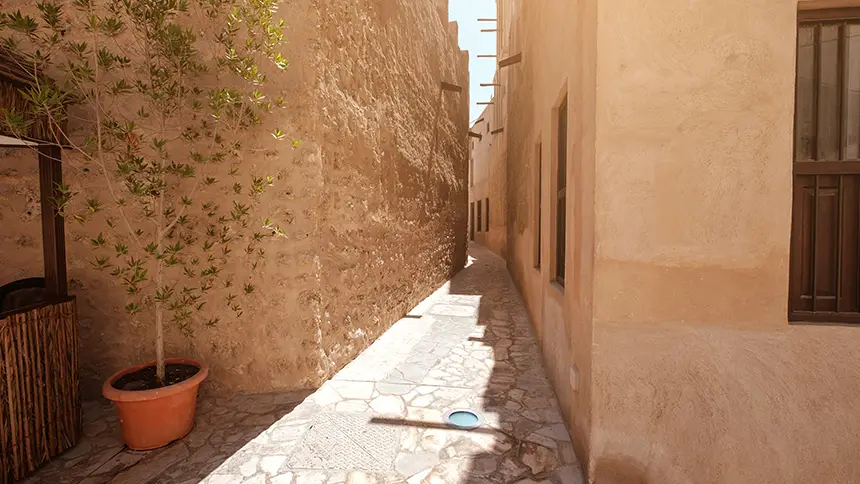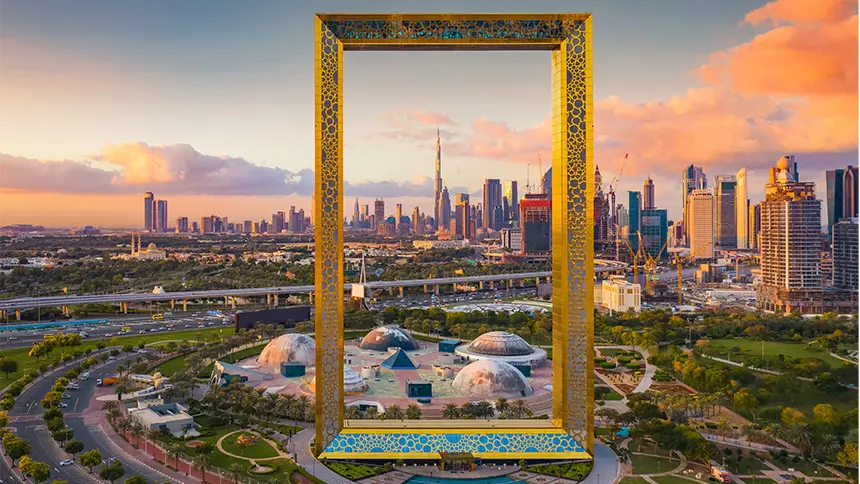Dubai is often known as a city of skyscrapers, luxury shopping malls, and futuristic projects. However, behind its modern image lies a neighborhood that takes you back in time, Al Fahidi Historical District, also called Al Bastakiya. This area is one of the oldest heritage sites in Dubai, dating back to the mid-19th century. Walking through its narrow alleys, traditional houses, and wind towers feels like stepping into a different world, where the roots of Emirati culture are still alive.
The district reflects Dubai’s history before the oil boom, when trade, pearl diving, and cultural exchange shaped daily life. Today, this Historical District is carefully preserved to showcase traditional architecture, local art, and cultural traditions.
The History and Heritage
The Al Fahidi Historical District was built in the late 1800s by wealthy merchants who settled in Dubai due to its location on the trade route between India, Persia, and East Africa. Many of the original families came from the Bastak region in Iran, which is why the area was originally known as Al Bastakiya.
The houses were constructed using materials like coral, gypsum, and palm wood. The unique feature of these homes is the barjeel, or wind tower, which provides natural air-conditioning in the hot desert climate. The towers were carefully designed to capture wind from all directions and funnel it down into the rooms, keeping them cool even during the summer.
For many years, the district thrived as a hub of trade and culture. Merchants exchanged goods like textiles, spices, and pearls, while mosques and majlis hosted community gatherings.
By the 1970s, Dubai was rapidly modernizing, and many old areas were demolished to make way for new buildings. This place was also at risk of disappearing. However, in the 1980s and 1990s, conservation efforts began, led by local authorities and historians who understood its value. Thanks to these efforts, the neighborhood was saved and restored, and today it stands as a living museum of Dubai’s past.
Exploring the Attractions of Al Fahidi
Visiting this Historical District is not just about looking at old buildings; it is about experiencing history, art, and culture. Here are some of the highlights you can explore:
Traditional Architecture and Wind Towers
This place has gypsum and wind towers (barjeel) that demonstrate clever desert cooling. Intricately carved wooden doors add a graceful touch of Islamic art to the neighborhood.
Al Fahidi Fort and Dubai Museum
Built in 1787, it is the oldest building in Dubai, once used to protect the city and later as a prison and weapons depot. Today, it houses the Dubai Museum, where visitors can explore exhibits on pearl diving, Bedouin life, and traditional crafts, tracing the city’s journey from a small trading port to a global hub.
Art Galleries and Cultural Spaces
This place is home to several art galleries, such as XVA Gallery and Majlis Gallery, where local and international artists showcase both contemporary and traditional works. The art scene here feels more personal and intimate than in modern galleries, offering a closer connection to creativity and culture.
Sheikh Mohammed Center for Cultural Understanding (SMCCU)
The Sheikh Mohammed Center for Cultural Understanding is a cultural hub where visitors can explore Emirati traditions, customs, and religion. With heritage tours, Arabic classes, and traditional meals, it lives by its motto “Open Doors, Open Minds,” making it a welcoming place to learn and ask questions freely about local culture.
Coffee Museum
The Coffee Museum is a small but fascinating place dedicated to the rich history of coffee. Its exhibits trace the journey of coffee from Ethiopia to the Arab world and eventually across the globe. Inside, visitors can explore antique coffee pots and roasters while also enjoying the authentic taste of traditional Arabic coffee.
Calligraphy House and Craft Shops
The Calligraphy House and nearby craft shops offer workshops in Arabic calligraphy, pottery, and handicrafts, giving visitors a chance to experience art hands-on. They also feature charming shops selling souvenirs like lanterns, carpets, and handmade jewelry.
Experiencing the Charm of Old Dubai
Walking through Al Fahidi is more than just sightseeing; it’s about immersing yourself in the atmosphere of the past and connecting with a way of life that has shaped Dubai’s identity. Every corner of the district tells a story, from its shaded alleys to its lively festivals and traditional cafés.
- Narrow Alleys and Courtyards – The winding lanes create a maze-like charm, leading to hidden courtyards and shaded sitting areas.
- Cultural Festivals – Events like the Sikka Art Fair transform the lanes and houses into open galleries, showcasing paintings, photography, and installations by local and regional artists. Heritage Week celebrates Emirati traditions with live demonstrations of crafts, storytelling, and folk music.
- Traditional Food – The district’s cafés and restaurants serve authentic Emirati dishes that allow visitors to taste the flavors of the past. Popular meals include harees, machboos, and luqaimat. Enjoying these dishes in a traditional courtyard café, with Arabic coffee and dates on the side, feels like a journey back in time.
- Peaceful Escape – In contrast to the energy of Dubai’s bustling malls, highways, and skyscrapers, this place offers a quiet, slower-paced experience. The sound of birds, the play of light and shade across sandy walls, and the gentle pace of life in the district provide a rare sense of peace in a city known for its fast pace.
- Photographer’s Paradise – This is one of the most photogenic areas in Dubai, with its sand-colored walls, traditional wooden doors, and beautifully designed lanterns. The play of sunlight and shadow in the narrow alleys creates striking contrasts that are perfect for photography.
Why Visit Al Fahidi?
This Historical District is a must-visit in Dubai for its unique blend of history, culture, and charm. It offers a glimpse of the city’s origins before the rise of skyscrapers, while also providing a chance to learn about Emirati traditions, architecture, and heritage. Visitors can enjoy intimate art galleries, relax in the calm setting away from modern bustle, and connect with locals who share stories of the past. To complete the experience, the district also invites you to savor authentic Emirati food and traditional Arabic coffee.
Tips for Visiting Al Fahidi
If you’re planning a trip to the Historical District, a few tips can help make your visit more enjoyable. The best time to go is in the morning or late afternoon when the weather is cooler, and it’s important to dress modestly as it is a cultural site. Joining a guided walking tour can give you deeper insights into the district’s history, while staying for cultural events or exhibitions adds to the experience. Don’t forget to bring a camera, as the architecture and winding streets are perfect for photography, and set aside at least two to three hours to explore comfortably.
Conclusion
Al Fahidi Historical District is not just an old neighborhood, it is a living memory of Dubai’s past. This district reminds everyone of the city’s humble beginnings, where trade, culture, and community life flourished.
Exploring this place helps us understand how far Dubai has come and how important it is to preserve traditions while moving forward. Whether you are a tourist or a resident, visiting here is like opening a time capsule that reveals the roots of Dubai’s identity. You can feel the true soul of Old Dubai here.


